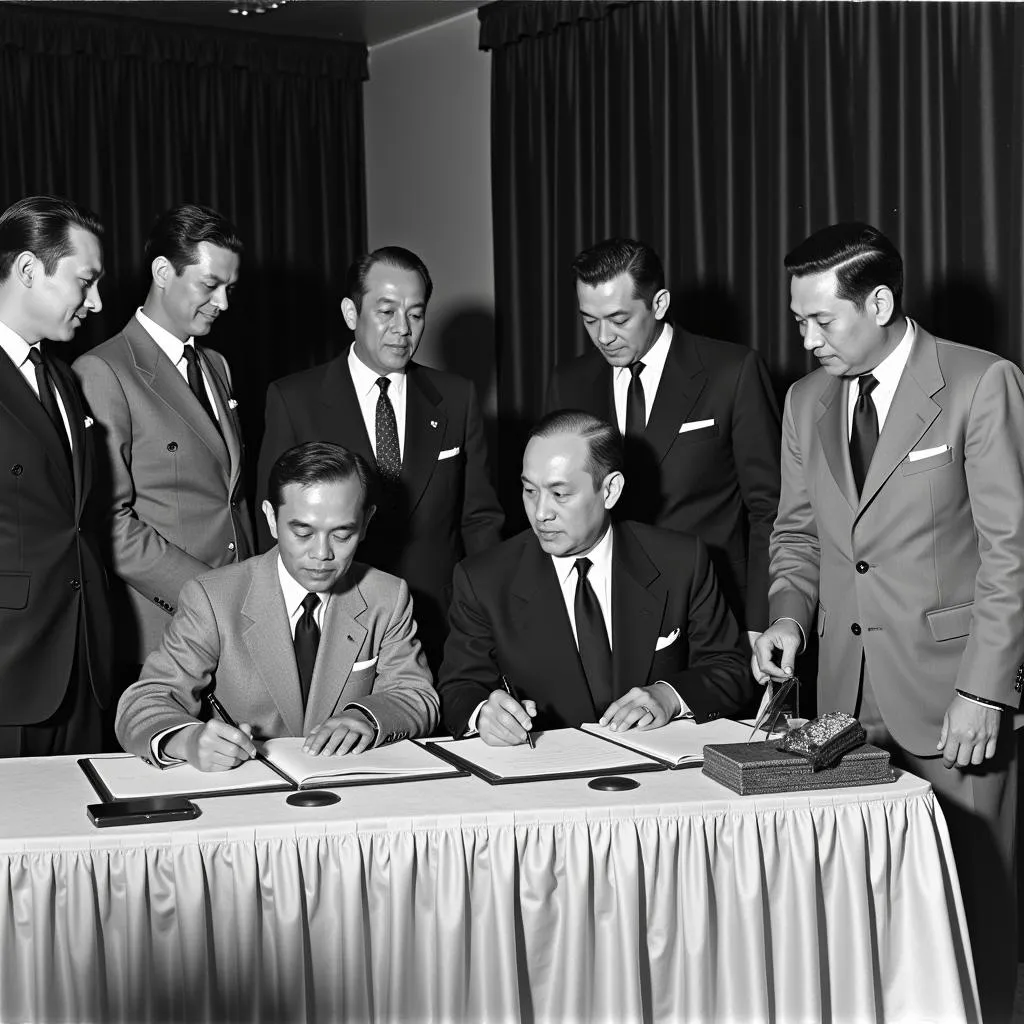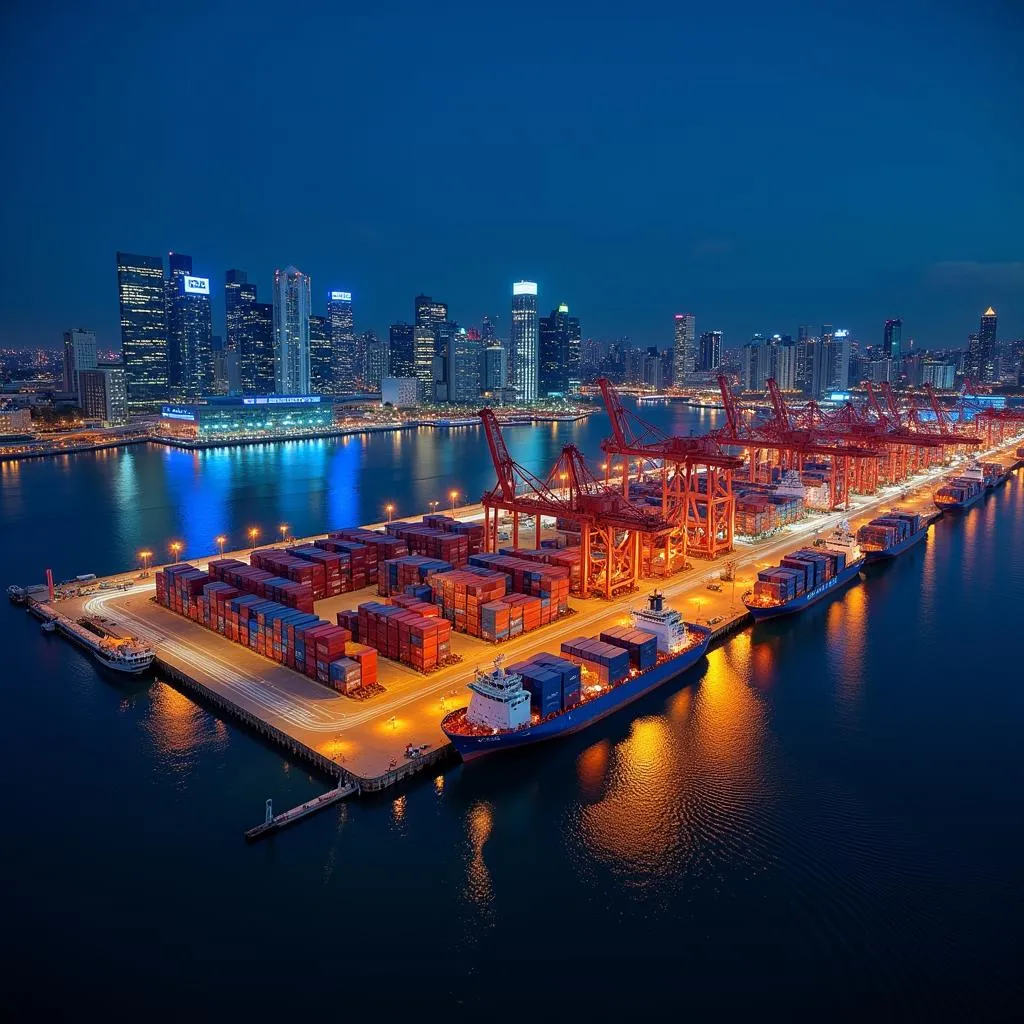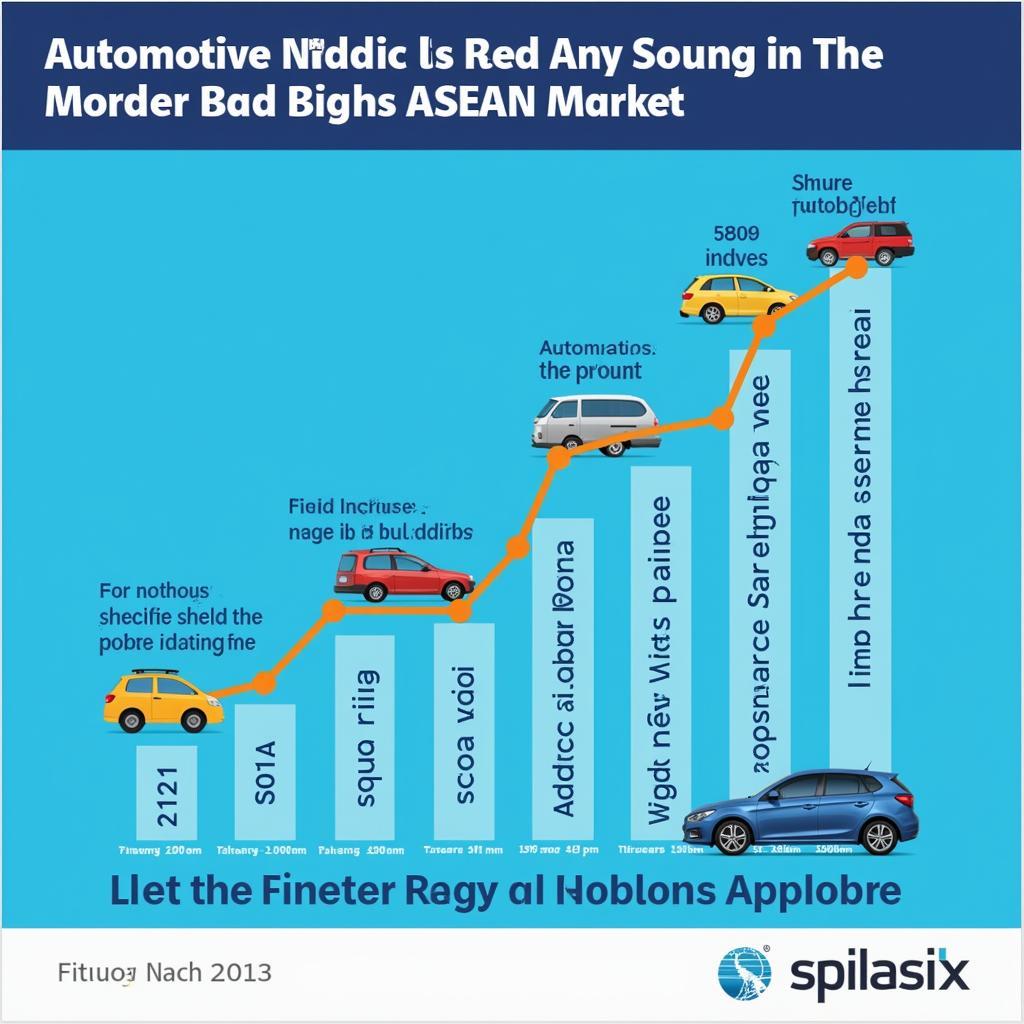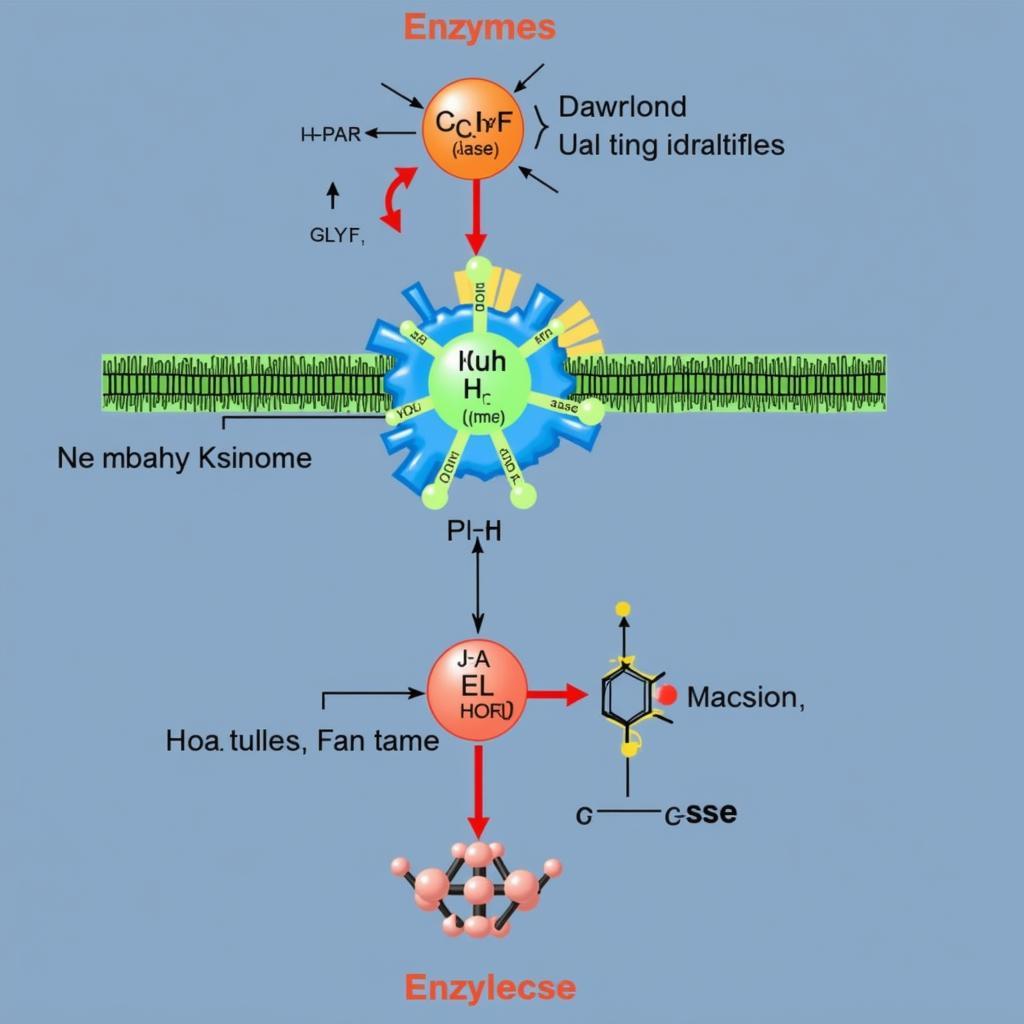The Asean 6 Member Countries, often referred to as the “founding fathers” of the Association of Southeast Asian Nations (ASEAN), have played a pivotal role in shaping the region’s economic and political landscape. These nations – Brunei, Indonesia, Malaysia, the Philippines, Singapore, and Thailand – laid the groundwork for a prosperous and integrated Southeast Asia. This article delves into the historical significance, economic prowess, and cultural tapestry of the ASEAN 6, highlighting their contributions to the ASEAN community and the world.
A Legacy of Unity and Cooperation: The Genesis of ASEAN 6
The seeds of ASEAN were sown amidst a turbulent period in Southeast Asian history. The year was 1967, and the Cold War was at its peak, casting a long shadow over the region. The Vietnam War raged on, threatening to engulf neighboring countries. It was against this backdrop of political uncertainty and ideological divides that the ASEAN 6 came together. Driven by a shared vision of peace, stability, and regional resilience, the foreign ministers of these six nations signed the Bangkok Declaration on August 8, 1967, marking the formal establishment of ASEAN.
This landmark agreement laid out the foundational principles of the organization, emphasizing:
- Mutual respect for sovereignty and territorial integrity: Recognizing the importance of national autonomy in a region marked by diversity.
- Non-interference in the internal affairs of member states: Fostering an environment of trust and cooperation.
- Peaceful settlement of disputes: Promoting dialogue and diplomacy as the primary means of conflict resolution.
- Renunciation of the threat or use of force: Committing to a rules-based regional order.
These principles have guided ASEAN’s evolution over the decades, transforming it into a robust regional organization with ten member states and a growing international profile.
 ASEAN 6 Founding Fathers Meeting
ASEAN 6 Founding Fathers Meeting
Economic Dynamism and Integration: The ASEAN 6 as a Global Growth Engine
The ASEAN 6 have witnessed remarkable economic transformation since their inception. Once primarily reliant on agriculture and resource extraction, these nations have diversified their economies, embracing industrialization, trade liberalization, and technological innovation. The ASEAN 6 have collectively emerged as a global economic powerhouse, boasting a combined GDP exceeding US $3 trillion and a population of over 500 million.
Several factors have contributed to their economic success:
-
Strategic Location: Situated at the crossroads of major shipping lanes connecting the Indian and Pacific Oceans, the ASEAN 6 enjoy a prime geographical advantage, facilitating trade and investment flows.
-
Abundant Natural Resources: The region is endowed with a wealth of natural resources, including oil, natural gas, minerals, timber, and agricultural products, providing a strong foundation for economic growth.
-
Young and Growing Workforce: The ASEAN 6 benefit from a young and expanding workforce, providing a demographic dividend that fuels innovation and entrepreneurship.
-
Increasing Regional Integration: The establishment of the ASEAN Free Trade Area (AFTA) and the ASEAN Economic Community (AEC) has fostered deeper economic integration, reducing trade barriers and promoting the free flow of goods, services, and investments.
 Bustling Trade Port in Singapore at Night
Bustling Trade Port in Singapore at Night
Cultural Tapestry: A Blend of Traditions and Modernity
Beyond their economic prowess, the ASEAN 6 are renowned for their rich cultural diversity. Each nation boasts a unique blend of indigenous traditions, colonial influences, and modern trends. From the ancient temples of Angkor Wat in Cambodia to the modern metropolis of Singapore, the region offers a captivating tapestry of cultural experiences.
Here’s a glimpse into the cultural vibrancy of the ASEAN 6:
-
Indonesia: The world’s largest archipelago, Indonesia is a melting pot of cultures, with over 300 ethnic groups and 700 languages. Its ancient temples, vibrant markets, and traditional dance forms offer a glimpse into its rich heritage.
-
Malaysia: A land of contrasts, Malaysia seamlessly blends its Malay, Chinese, and Indian influences. Its bustling cities, pristine beaches, and lush rainforests provide a diverse range of experiences for visitors.
-
The Philippines: Known for its warm hospitality and vibrant festivals, the Philippines boasts a unique cultural blend influenced by Spanish colonialism and American influence. Its stunning beaches, coral reefs, and historic churches are major tourist attractions.
-
Singapore: A modern city-state with a multicultural society, Singapore is a fusion of East and West. Its iconic landmarks, world-class cuisine, and vibrant arts scene make it a global cultural hub.
-
Thailand: Famed for its ornate temples, bustling markets, and delectable cuisine, Thailand is a popular tourist destination. Its rich history, cultural traditions, and natural beauty continue to captivate visitors.
-
Brunei: Situated on the island of Borneo, Brunei is known for its Islamic heritage and stunning mosques. Its pristine rainforests, diverse wildlife, and traditional Malay culture offer a unique travel experience.
 Traditional Thai Dancers Performing at a Temple
Traditional Thai Dancers Performing at a Temple
Conclusion: ASEAN 6 – A Cornerstone of Regional Integration and Global Influence
The ASEAN 6 member countries stand as a testament to the power of regional cooperation and integration. Their journey from nascent nations grappling with post-colonial challenges to economic powerhouses and influential players on the global stage is nothing short of remarkable. As founding members of ASEAN, they have played a pivotal role in shaping the organization’s trajectory, fostering peace, stability, and prosperity in Southeast Asia. Their enduring commitment to ASEAN’s principles of dialogue, consensus-building, and non-interference has served as a model for regional cooperation worldwide.
Do you want to delve deeper into the intricacies of ASEAN? Explore our articles on the meaning of ASEAN and ASE army to gain a comprehensive understanding of this dynamic regional organization.
Frequently Asked Questions about ASEAN 6
1. What are the main objectives of ASEAN?
ASEAN’s primary objectives are to accelerate economic growth, social progress, and cultural development in the region, promote regional peace and stability, and collaborate with international organizations.
2. What is the significance of the ASEAN Free Trade Area (AFTA)?
AFTA aims to eliminate tariffs and non-tariff barriers to trade among member states, creating a single market and production base, attracting foreign investment, and boosting regional competitiveness.
3. How do the ASEAN 6 contribute to the global economy?
The ASEAN 6 are major players in global trade, investment, and tourism. They are also key contributors to global supply chains, particularly in electronics, textiles, and automotive industries.
Explore More About ASEAN
For further insights into ASEAN and its member states, explore these related articles:
Need assistance or have questions about ASEAN? Contact us at:
Phone Number: 0369020373
Email: aseanmediadirectory@gmail.com
Address: Thon Ngoc Lien, Hiep Hoa, Bac Giang, Vietnam.
Our dedicated customer support team is available 24/7 to assist you.


